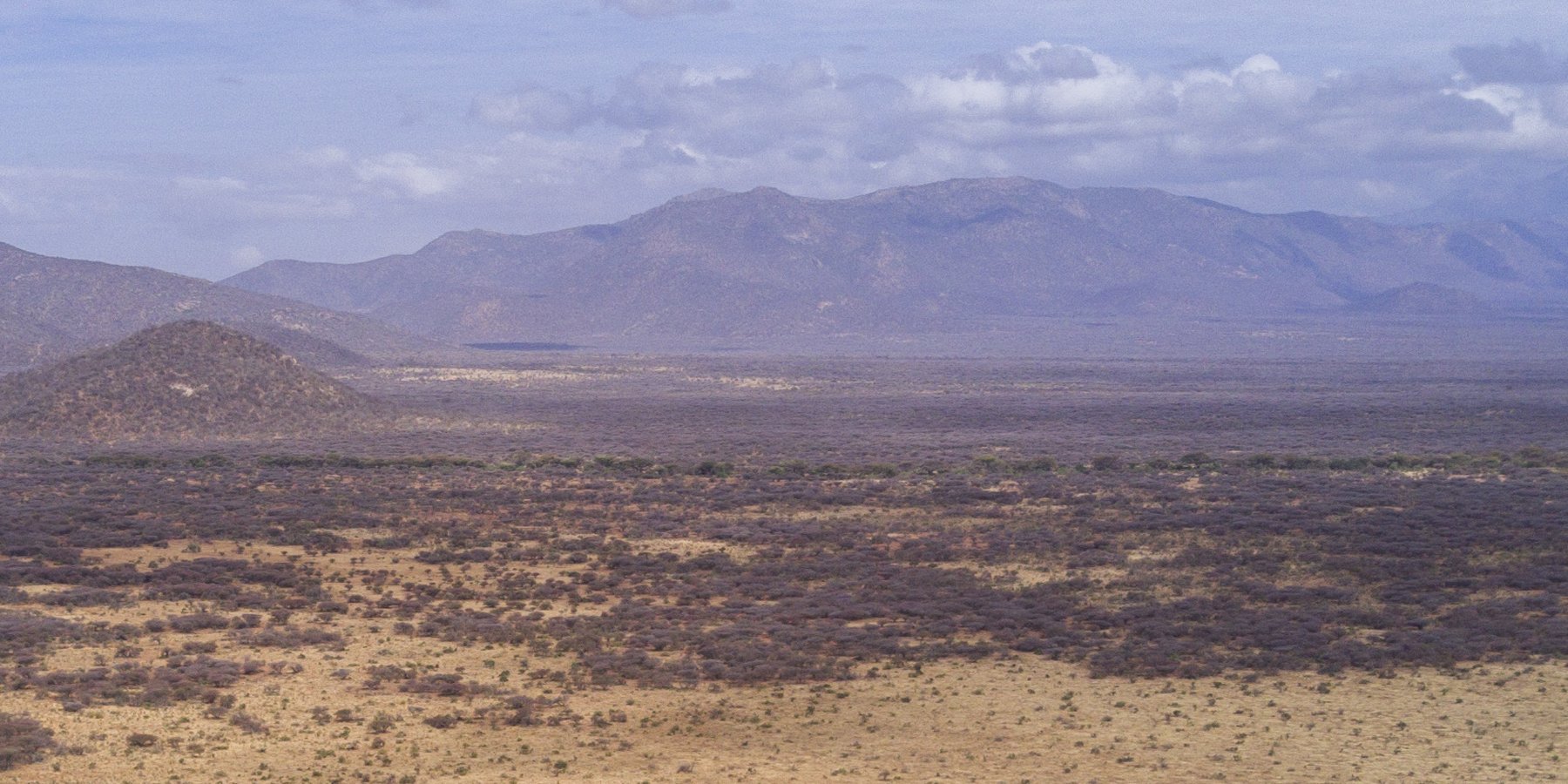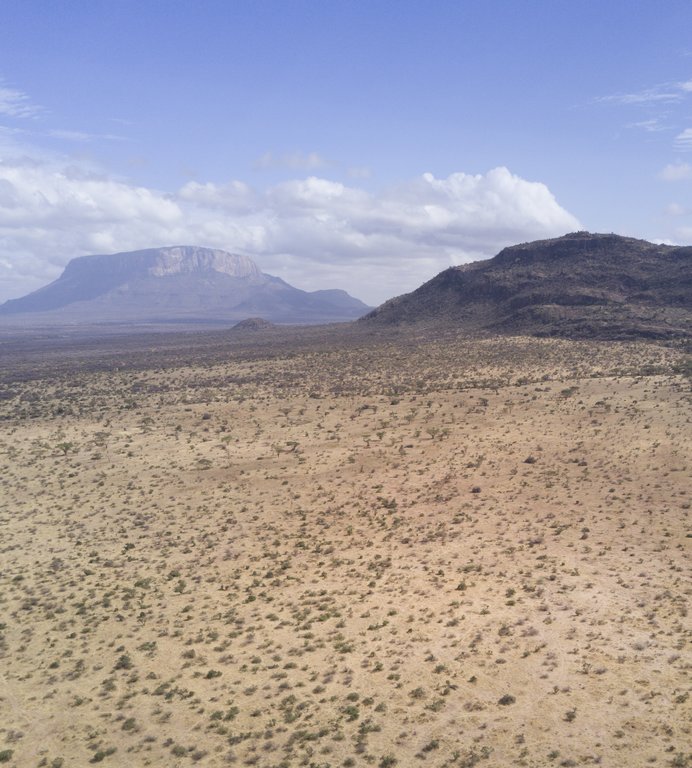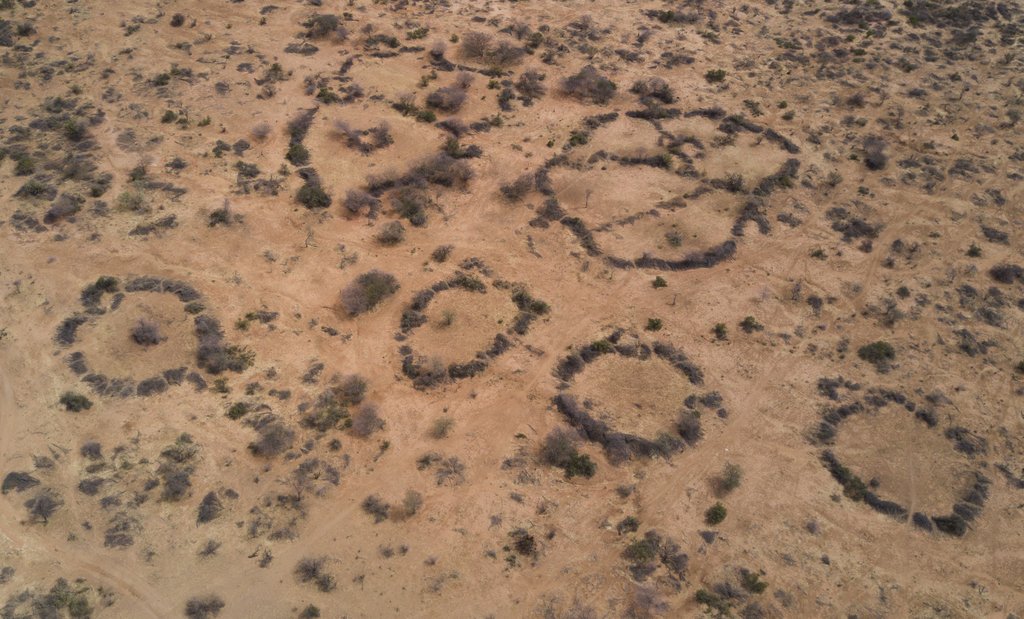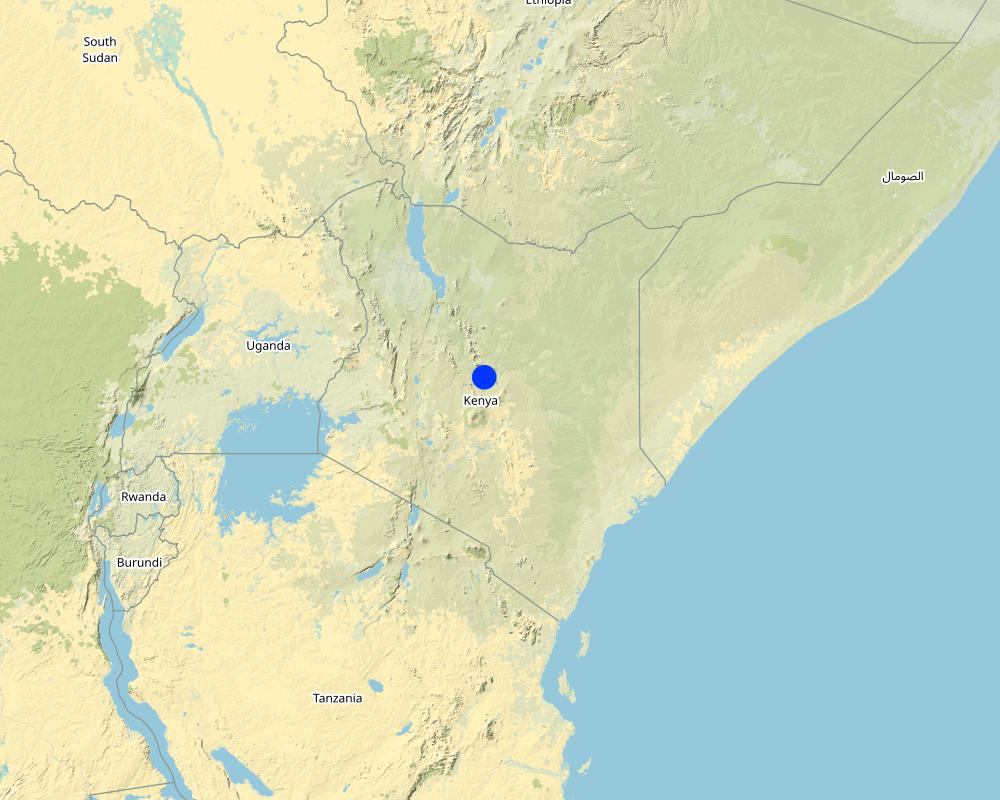Holistic Rangeland Management combined with high end tourism [Kenya]
- Creation:
- Update:
- Compiler: Harry Wells
- Editor: –
- Reviewers: Donia Mühlematter, Rima Mekdaschi Studer, Simone Verzandvoort, Hanspeter Liniger, Joana Eichenberger
"Ramat engop"
approaches_3399 - Kenya
- Full summary as PDF
- Full summary as PDF for print
- Full summary in the browser
- Full summary (unformatted)
- Holistic Rangeland Management combined with high end tourism: Nov. 2, 2021 (public)
- Holistic Rangeland Management combined with high end tourism: Aug. 10, 2018 (inactive)
- Holistic Rangeland Management combined with high end tourism: Oct. 22, 2018 (inactive)
- Holistic Rangeland Management combined with high end tourism: Sept. 3, 2018 (inactive)
- Holistic Rangeland Management combined with high end tourism: May 6, 2018 (inactive)
View sections
Expand all Collapse all1. General information
1.2 Contact details of resource persons and institutions involved in the assessment and documentation of the Approach
Key resource person(s)
land user:
Name of project which facilitated the documentation/ evaluation of the Approach (if relevant)
Book project: Guidelines to Rangeland Management in Sub-Saharan Africa (Rangeland Management)1.3 Conditions regarding the use of data documented through WOCAT
When were the data compiled (in the field)?
11/02/2018
The compiler and key resource person(s) accept the conditions regarding the use of data documented through WOCAT:
Yes
2. Description of the SLM Approach
2.1 Short description of the Approach
The establishment of a community wildlife conservancy facilitates (1) 'holistic rangeland management' refering to a to the implementation of a suite of management practices aimed at sustaining and/or improving rangeland productivity such as 'bunched grazing' (livestock concentrated for short duration intensive grazing), short-term 'bomas' (livestock corrals occupied for ~7 days), clearing invasive species and reseeding with grass to assist land rehabilitation/restoration; and (2) High end tourism and monetary donations facilitated by the Northern Rangelands Trust provide funding for the implementation of improved grazing practices and additional income for the community and the reduction of livestock grazing pressure.
2.2 Detailed description of the Approach
Detailed description of the Approach:
Kalama Community Wildlife Conservancy has been established with a hierarchical structure led by a board of 13 members (5 female, 8 male), one representing each of the 13 'zones' of the Conservancy. There are also three subcommittees for grazing, finances and tourism. The main aims are to improve the involvement of the community members in the overall management of the conservancy, the generation of additional income from high end tourism and wildlife conservation and the investment into improved land management. The main sources of funding are revenue from contracted high end tourism operation and donations (facilitated by Northern Rangelands Trust). The approximate breakdown of the funding sources is: Tourism including selling of handicrafts (60%), Donors (25%), County Government (5%), Livestock Trading (5%), Camping (5%). Improved livelihood and ownership in the management as well as shared responsibility and benefits are key incentives for the community members.
Within the conservancy an attractive site on a hill overlooking the plains has been leased to an investor for the establishment of an exclusive tourist lodge on the principle of “invest, operate and transfer”, where the investor builds the infrastructure operates is for an agreed period and then transfers it to the community. Further several comping grounds are available for lower budget tourists. The conservancy profits from the neighbouring Samburu Game Reserves. This provides regular income from the lease of the land the entrance fees into the conservancy, employment opportunities for conservancy members (for catering, kitchen, house cleaning, rangers providing security for tourists and protection for wildlife as well as guides for safaris and for entertainment) and a market for selling handicrafts and souvenirs. Another cornerstone is their relationships with two trusts (Northern Rangeland Trust and the Grevy’s Zebra Trust). They have been supportive in the implementation of several holistic rangeland management practices, which include 'bunched grazing' (livestock concentrated for short duration intensive grazing), short-term 'bomas' (livestock corrals occupied for ~7 days), clearing invasive species and reseeding with grass to assist land rehabilitation/restoration. The main aims are to maintain and/or improve rangeland productivity. Regarding methods, 'bunched grazing' is implemented by a team of herders ensuring the livestock are in a tight herd. Short-term 'bomas' are established on bare ground in the traditional manor (i.e. laying cut thorny woody vegetation on the ground to encircle livestock and help protect them from depredation during the night). Invasive woody vegetation can be used to erect these 'bomas'. Invasive species (predominantly Acacia reficiens) is cleared by hand using machetes during the dry season; branches cut ~1 m above the ground to prevent regrowth. Cut branches are laid on the bare ground beneath and seeds of Cenchrus ciliaris hand-broadcasted prior to the onset of rains. Members of the Kalama Community Wildlife Conservancy carry out these activities, both paid (clearing invasive species and reseeding) and unpaid ('bunched grazing' and short-term 'bomas'). Land users and tourists enjoy and value the benefits of increased forage availability in areas successfully rehabilitated but are dissatisfied with the limited extent of the rangeland improvement.
2.3 Photos of the Approach
2.5 Country/ region/ locations where the Approach has been applied
Country:
Kenya
Region/ State/ Province:
Samburu County
Further specification of location:
North of Archers Post Bordering Samburu Game Reserve
Map
×2.6 Dates of initiation and termination of the Approach
Indicate year of initiation:
2006
If precise year is not known, indicate approximate date when the Approach was initiated:
10-50 years ago
2.7 Type of Approach
- project/ programme based
2.8 Main aims/ objectives of the Approach
The main objectives of the approach are to maintain and/or improve rangeland productivity.
2.9 Conditions enabling or hindering implementation of the Technology/ Technologies applied under the Approach
social/ cultural/ religious norms and values
- enabling
Established traditional practice of erecting 'bomas', particularly using less valuable woody vegetation, facilitates implementation of short-term 'bomas' that only require a change in duration of occupancy.
- hindering
Traditional practices of herding one's own immediate family's livestock in separate herds deters land users from agreeing to combine herds into larger groups for 'bunched grazing' (also due to associated issues of disease transmission). Furthermore, lack of observation and enforcement of local grazing rules prevents necessary resting of grazing land.
availability/ access to financial resources and services
- enabling
Supplementary income can lead to investment in activities unrelated to livestock husbandry (e.g. setting up small businesses or educating children) rather than increasing heard size, which may prevent further increases in pressure on the rangeland.
- hindering
Supplementary income often leads to the purchasing of more livestock, which further increases pressure on the rangeland.
collaboration/ coordination of actors
- enabling
Clearing of invasive species and reseeding with grass undertaken by land users from all villages/zones of the Kalama Community Wildlife Conservancy.
- hindering
Individual concerns are at odds with that of the wider community, leading to opportunistic breaking of grazing rules and deterioration of communally managed rangeland.
legal framework (land tenure, land and water use rights)
- enabling
To some extent provides sense of ownership over the land, which may motivate involvement in sustainable land management practices.
- hindering
Tenure of of the land is communal but livestock ownership is individual or at the level of immediate families, which creates tensions and conflicts regarding sustainable land management.
land governance (decision-making, implementation and enforcement)
- enabling
Community-elected board (representative of the 13 villages/zones) and grazing committee together enable formalisation of grazing rules into by-laws.
- hindering
Grazing rules and by-laws not well implemented or adhered to.
knowledge about SLM, access to technical support
- enabling
Access to technical support from NGOs such as the Northern Rangelands Trust and Grevy's Zebra Trust.
- hindering
Lack of knowledge about SLM has lead to unsuccessful grassland rehabilitation efforts.
markets (to purchase inputs, sell products) and prices
- enabling
Located close to livestock market in the local town, Archer's Post.
- hindering
Limited direct access to markets further afield (e.g. Nairobi or international markets), with better prices.
workload, availability of manpower
- enabling
Casual labour easily found within the community.
- hindering
Large areas of land awaiting rehabilitation, which would require large amounts of labour.
3. Participation and roles of stakeholders involved
3.1 Stakeholders involved in the Approach and their roles
- local land users/ local communities
Local land users selected from villages/zones within the community of the conservancy.
Providing livestock for joint herding and boma-ing and providing labour for restoration activities (e.g. clearing invasive species and reseeding with grass). Provide services for the running of the wildlife conservancy and tourist activities.
- SLM specialists/ agricultural advisers
Advisors from the two trusts: Northern Rangeland Trust and Grevy's Zebra Trust for the support in the design and the implementation of the improved rangeland management practices.
Providing technical knowhow and sharing experiences with other rangeland users where the practices have been applied.
- researchers
Master students from the universities in Kenya
Investigating into the state of the rangelands and monitoring changes
- NGO
Northern Rangelands Trust and Grevy's Zebra Trust
Provided funds for learning visits to a ranch implementing 'Holistic Rangeland Management' in Zimbabwe and costs of implementation in Kalama Community Wildlife Conservancy. Also provided technical support.
- local government
County government employees related to tourism and management of Samburu Game Reserve
Making agreements for the use and sharing of income from tourism
- international organization
Northern Rangeland Trust: Grevy's Zebra Trust
Joint planning of land management across the boundaries of the Community Wildlife Conservancy. Agreement for movement across boundaries and sharing of common resources
If several stakeholders were involved, indicate lead agency:
Kalama Wildlife Community Conservancy
3.2 Involvement of local land users/ local communities in the different phases of the Approach
| Involvement of local land users/ local communities | Specify who was involved and describe activities | |
|---|---|---|
| initiation/ motivation | interactive | Using their experience setting up other community conservancies in Kenya, the Northern Rangelands Trust was able to assist in defining the organisational structure of Kalama Conservancy. However, conservancies are not set up without the interest of the community in question. |
| planning | interactive | Kalama Conservancy's board, which plans the Holistic Rangeland Management activities, is composed of members of Kalama Conservancy and those elected by the members of the conservancy. The Northern Rangelands Trust, in particular, helps to plan activities. For example, the Northern Rangelands Trust raised funds to enable members of Kalama Conservancy to visit a ranch in Zimbabwe where Holistic Rangeland Management activities are practiced. |
| implementation | interactive | Members of Kalama Conservancy carry out the Holistic Rangeland Management activities. However, 25% of the costs are covered by donations and training related to specific activities is provided by Northern Rangelands Trust and Grevy's Zebra Trust. |
| monitoring/ evaluation | interactive | The Northern Rangelands Trust commissioned a baseline survey of rangeland health in Kalama Conservancy, which was conducted in 2013. However, the Rangeland Coordinator, Benson Lelukai, was also trained by Northern Rangelands Trust to conduct informal rangeland health monitoring. As yet, no reports are available documenting the success or otherwise of the approach. |
3.4 Decision-making on the selection of SLM Technology/ Technologies
Specify who decided on the selection of the Technology/ Technologies to be implemented:
- mainly SLM specialists, following consultation with land users
Explain:
The Holistic Rangeland Management activities are closely modeled on those advocated by the Savory Institute. The Northern Rangelands Trust facilitated the introduction of the practices (e.g. bunched grazing and more frequently moved livestock corrals), which were implemented following consultation with Kalama Conservancy's members.
Specify on what basis decisions were made:
- personal experience and opinions (undocumented)
4. Technical support, capacity building, and knowledge management
4.1 Capacity building/ training
Was training provided to land users/ other stakeholders?
Yes
Specify who was trained:
- land users
Form of training:
- public meetings
4.2 Advisory service
Do land users have access to an advisory service?
Yes
- personal communication
Describe/ comments:
The community work closely with Northern Rangelands Trust, which can provide advice.
4.3 Institution strengthening (organizational development)
Have institutions been established or strengthened through the Approach?
- yes, moderately
Specify the level(s) at which institutions have been strengthened or established:
- local
Describe institution, roles and responsibilities, members, etc.
Establishment of board and grazing committee facilitate conservancy-level decisions.
Specify type of support:
- financial
- capacity building/ training
Give further details:
Northern Rangelands Trust provide financial assistance (USAID funding) and training together with Grevy's Zebra Trust (FAO funding).
4.4 Monitoring and evaluation
Is monitoring and evaluation part of the Approach?
Yes
Comments:
But, so far, monitoring is informal and available documentation reporting outcomes of the approach is limited.
If yes, is this documentation intended to be used for monitoring and evaluation?
No
4.5 Research
Was research part of the Approach?
No
5. Financing and external material support
5.1 Annual budget for the SLM component of the Approach
Indicate the annual budget for the SLM component of the Approach in US$:
24447.00
If precise annual budget is not known, indicate range:
- 10,000-100,000
Comments (e.g. main sources of funding/ major donors):
Main sources of funding are revenue from contracted high end tourism operation and donations (facilitated by Northern Rangelands Trust). Rough breakdown: Tourism including selling of handicrafts (60%), Donors (25%), County Government (5%), Livestock Trading (5%), Camping (5%).
5.2 Financial/ material support provided to land users
Did land users receive financial/ material support for implementing the Technology/ Technologies?
Yes
If yes, specify type(s) of support, conditions, and provider(s):
Financial support provided to cover costs associated with activities (e.g. labour, logistics).
5.3 Subsidies for specific inputs (including labour)
- labour
| To which extent | Specify subsidies |
|---|---|
| fully financed |
- other
| Other (specify) | To which extent | Specify subsidies |
|---|---|---|
| logistics (fuel) | fully financed |
If labour by land users was a substantial input, was it:
- paid in cash
5.4 Credit
Was credit provided under the Approach for SLM activities?
No
5.5 Other incentives or instruments
Were other incentives or instruments used to promote implementation of SLM Technologies?
No
6. Impact analysis and concluding statements
6.1 Impacts of the Approach
Did the Approach empower local land users, improve stakeholder participation?
- No
- Yes, little
- Yes, moderately
- Yes, greatly
Restoration efforts hired labour from all zones of the conservancy.
Did the Approach enable evidence-based decision-making?
- No
- Yes, little
- Yes, moderately
- Yes, greatly
Some monitoring is conducted but informal and not comprehensive.
Did the Approach help land users to implement and maintain SLM Technologies?
- No
- Yes, little
- Yes, moderately
- Yes, greatly
The organizational structure of the conservancy provided a framework for inter-village coordination with respect to SLM.
Did the Approach improve coordination and cost-effective implementation of SLM?
- No
- Yes, little
- Yes, moderately
- Yes, greatly
The organizational structure of the conservancy provided a framework for inter-village coordination with respect to SLM.
Did the Approach mobilize/ improve access to financial resources for SLM implementation?
- No
- Yes, little
- Yes, moderately
- Yes, greatly
Substantial income from tourism allowed investment into improved rangeland management.
Did the Approach improve knowledge and capacities of land users to implement SLM?
- No
- Yes, little
- Yes, moderately
- Yes, greatly
Training provided by the conservancy's institutional partners (NRT and GZT) contributed to developing SLM capacity.
Did the Approach improve knowledge and capacities of other stakeholders?
- No
- Yes, little
- Yes, moderately
- Yes, greatly
Learning visits to rangeland restoration sites invited members of other communities around the country to be exposed to restoration practices and their impacts.
Did the Approach build/ strengthen institutions, collaboration between stakeholders?
- No
- Yes, little
- Yes, moderately
- Yes, greatly
The organizational structure of the conservancy provided a framework for inter-village collaboration.
Did the Approach mitigate conflicts?
- No
- Yes, little
- Yes, moderately
- Yes, greatly
Job creation mitigated conflicts, particularly the jobs made available to young warrior class individuals (e.g. motorbike driver), who would otherwise be arming themselves and rustling livestock.
Did the Approach empower socially and economically disadvantaged groups?
- No
- Yes, little
- Yes, moderately
- Yes, greatly
No particular measures to benefit socially disadvantaged groups was mentioned.
Did the Approach improve gender equality and empower women and girls?
- No
- Yes, little
- Yes, moderately
- Yes, greatly
Bead-work markets facilitated by NRT created income opportunities for women.
Did the Approach encourage young people/ the next generation of land users to engage in SLM?
- No
- Yes, little
- Yes, moderately
- Yes, greatly
Young people were also involved in the rangeland restoration efforts.
Did the Approach improve issues of land tenure/ user rights that hindered implementation of SLM Technologies?
- No
- Yes, little
- Yes, moderately
- Yes, greatly
The conservancy structure provides land tenure security and increases the motivation to practice SLM.
Did the Approach lead to improved food security/ improved nutrition?
- No
- Yes, little
- Yes, moderately
- Yes, greatly
The increased income through tourism and donor funding may have led to improved food security/nutrition, but difficult to judge.
Did the Approach improve access to markets?
- No
- Yes, little
- Yes, moderately
- Yes, greatly
NRT create a market for their livestock by buying and selling to ranchers for fattening programmes.
Did the Approach lead to improved access to water and sanitation?
- No
- Yes, little
- Yes, moderately
- Yes, greatly
Donor funding enabled the establishment of a clinic, which has greatly increased access to health care.
Did the Approach lead to more sustainable use/ sources of energy?
- No
- Yes, little
- Yes, moderately
- Yes, greatly
No reported change in energy sources.
Did the Approach improve the capacity of the land users to adapt to climate changes/ extremes and mitigate climate related disasters?
- No
- Yes, little
- Yes, moderately
- Yes, greatly
Over such a short period, this is difficult to make any statements about.
Did the Approach lead to employment, income opportunities?
- No
- Yes, little
- Yes, moderately
- Yes, greatly
The conservancy structure creates jobs such as: managerial, committee membership, accounting, security, temporary labour.
6.2 Main motivation of land users to implement SLM
- increased production
- reduced land degradation
- payments/ subsidies
Initial costs for the establishment of the practices (e.g. cutting of invasive species are fully covered through income and resources from tourism and support from the trusts
- aesthetic improvement
attractive landscape less degraded and monotonous due to one invasive species
- Improved attractiveness for tourism and fooder for wildlife ???
6.3 Sustainability of Approach activities
Can the land users sustain what has been implemented through the Approach (without external support)?
- uncertain
If no or uncertain, specify and comment:
Lack of funding prevents larger areas from being rehabilitated through clearing of invasive species and reseeding with grass. Moreover, inability to control grazing pressure to give adequate rest to rehabilitating areas has led to unsuccessful restoration efforts. However, restoration efforts may gradually become voluntary in the future and land users may be incentivised to adhere to local grazing rules.
6.4 Strengths/ advantages of the Approach
| Strengths/ advantages/ opportunities in the land user’s view |
|---|
| Land previously considered unproductive is now considered grazing land. |
| Increased infiltration, reduced run-off and soil erosion. |
| Regeneration of the grassland in the 'core conservation area' (a central area with minimised grazing pressure demarcated for tourism) attracts wildlife, which in turn benefits tourism. |
| Strengths/ advantages/ opportunities in the compiler’s or other key resource person’s view |
|---|
| Where implemented, restoration activities and reduced grazing pressure have increased productivity and diversity or grasses and forbs for livestock and wildlife forage. |
| Takes advantage of inherent capacity of the land to recover. |
| Improved attractiveness for tourism |
6.5 Weaknesses/ disadvantages of the Approach and ways of overcoming them
| Weaknesses/ disadvantages/ risks in the land user’s view | How can they be overcome? |
|---|---|
| The expectation from the community regarding the tourism-related jobs and income are too high. | Raising awareness about the limitations of benefits from tourism. |
| Increased pressure on 'Core Area' due to higher grass/forage production. | Strictly enforce local by-laws that restrict grazing in the 'Core Area'. |
| Rangers under-equipped and lack sufficient capacity. | Source more equipment and provide training/capacity building for rangers. |
| Weaknesses/ disadvantages/ risks in the compiler’s or other key resource person’s view | How can they be overcome? |
|---|---|
| Very few land users are implementing the practices (e.g. short-term 'bomas' and 'bunched grazing'). | Although likely unfeasible, one possible solution might be for the community to manage the livestock communally and share the produce rather than individual ownership, which creates conflicts in motivation between the individual and the wider community. |
| Paying community members to undertake restoration activities has limited the area rehabilitated to date and led to a reliance on donor funding for land restoration. This may also be eroding the community's social capital by placing a monetary value on land health and thus devaluing it and replacing the inherent sense of value of land health that may have existed previously. | Encouraging voluntary participation in restoration activities may not only increase the area rehabilitated but also improve long-term maintenance through cultivating a sense of ownership. |
| Lack of adherence to and enforcement of grazing rules limits the success of sustainable land management efforts. | Strictly enforce local grazing rules and by-laws. |
7. References and links
7.1 Methods/ sources of information
- field visits, field surveys
2 field visits.
- interviews with land users
3 informants (Manager, Rangeland Coordinator and Chair of Grazing Committee).
- interviews with SLM specialists/ experts
2 informants (Northern Rangelands Trust and Grevy's Zebra Trust employees)
- compilation from reports and other existing documentation
1 report, 1 technical guideline document, and 1 poster.
7.2 References to available publications
Title, author, year, ISBN:
Northern Rangeland Trust: Baseline assessment of rangeland health - Kalama and Namunyak conservancies, Leigh A. Winowiecki & Tor-G. Vågen2014
Available from where? Costs?
Available online at no cost.
7.3 Links to relevant information which is available online
Title/ description:
Northern Rangeland Trust: Baseline assessment of rangeland health - Kalama and Namunyak conservancies
URL:
https://cgspace.cgiar.org/bitstream/handle/10568/65671/nrtReport_march2014.pdf?sequence=1
Links and modules
Expand all Collapse allLinks
No links
Modules
No modules






